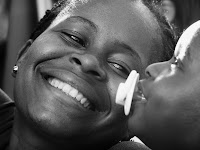



Cova da Moura is an illegal construction quarter, created in the late 70s in Lisbon’s Metropolitan Area. Half of the inhabitants are less than 20 years old. The great majority is of African origin: 75% are Cape Verdean, but there are also Guinean, Angolan and Portuguese. Most of the male active population works in the civil construction (44,5%). Women are mainly employed as domestic and cleaning workers, as restaurant cooks and waitresses and as fish and fruit sellers.
The houses of the quarter were constructed by the people who live in there. It is a place where a “proper way of life” is becoming stronger and fighting the poverty, crime and exclusion that have been long-time and closely associated to the neighbourhood.
Part of the existing equipment for leisure, educational and cultural purposes was created and developed in the quarter by its own inhabitants. An example of this is the Cultural Association "Moinho da Juventude" (http://redeciencia.educ.fc.ul.pt/moinho), a community project that develops social, cultural and economic activities. They fight for the quarter’s requalification, under a principle that respects the present reality of occupation of the space and includes the biggest number of existing buildings. They do not accept the destruction of the built patrimony nor its community life and traditions, of such great cultural and social value.
This fight has a face and a name, Lieve, but there is also a great group of anonimous people who co-operate and help.
They finally got the promise of the requalification program, but now the fight has another form: to prevent the authorities from destroying the small surviving businesses and the African Culture, and thus avoiding becoming just another ghetto with new and clean walls.
Photos and text by Alfredo Muñoz de Oliveira and Cristina Vasconcelos



